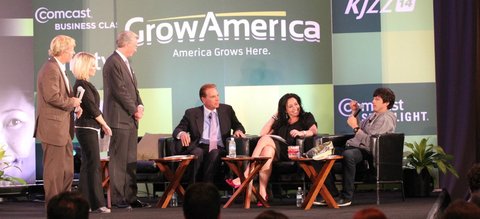Why the attraction? Lady Carnarvon’s home is the fictional setting for the TV series “Downton Abbey,” and she is determined to cash in. As she told a visitor while scrambling to find a place for lunch that wasn’t already occupied by tourists, the location fees paid for the use of Highclere “are not going to pay for the roof.”
Lady Carnarvon was known as Fiona Aitken before she married Geordie Herbert, the Eighth Earl of Carnarvon and Queen Elizabeth II’s godson, in 1999. She has become the face of Highclere as her husband devotes himself to the less-glamorous operational side of running this vast estate, and speaks with the proper accent of a countess and the numeric frankness of a chief financial officer. “If you win the lottery, you’re winning something called cash,” she said. “With ‘Downton,’ it’s how it can turn in to something like cash.”
The television show has brought worldwide fame to Highclere Castle (which Lady Carnarvon’s husband’s family has owned since the late 17th century), especially among what she calls “lots of lovely Americans.” But the house costs $1.5 million a year to run, and it has not received the windfall that viewers of the show would assume.
It certainly didn’t provide the fortune brought by Almina Wombwell, the Fifth Countess of Carnarvon and daughter of Alfred de Rothschild, who married into the family in 1895; that paid for the first electricity and plumbing. The current Lady Carnarvon recognizes that keeping a house like Highclere financially solvent and in the family is far more difficult today.
“It’s both my husband’s family home and my home, but it has to work in the modern world — it has to be a business,” she said as she finished lunch and asked her assistant to provide her something sweet. “Yes, my lady,” he said and promptly returned with a jelly doughnut.
Lady Carnarvon is such an advocate of prudent finances that she would seem to have more in common with Suze Orman than with her husband’s pedigreed relations. As she gazed out from the footmen’s rooms onto the tents on Highclere’s lawns, she talked about all her efforts to pay for Highclere Castle’s costly renovations, like running a working farm to produce horse feed and hosting events there like an Easter egg hunt that required relocating a field of lambs to make room for visitors.
In addition to bringing in more film and television companies to shoot in Highclere’s less recognizable chambers, she has rented out the home for weddings, including that of the model Katie Price, at rates starting at about $22,000.
A Richmond, Va.-based speaker’s bureau, Arnett Associates, handles Lady Carnarvon’s speaking engagements, with fees starting at $20,000. Then there are her books. “Lady Almina and the Real Downton Abbey,” which was published in 2011, made the New York Times best-seller list and sold a respectable 157,000 copies. (She is writing another book, about her husband’s ancestors, specifically Catherine Wendell, the American-born Sixth Countess of Carnarvon.)
Through all of this fund-raising, she still tries to make Highclere Castle feel like a real home, with magazines strewn on the night tables of bedrooms recognizable to “Downton Abbey” fans and family photographs featuring the royals strategically placed throughout common rooms. Her family spends much of its time exiled to a cottage 20 yards away, where the countess said she keeps the “dogs, rabbits, trampolines, Xbox.” That’s where on a recent afternoon, Lady Carnarvon’s son, Edward, played with her husband’s son from his first marriage, George.
“I never rest,” she said. “I am always looking for the next trick.”
Not everyone has been pleased with how she has tried to make money off Highclere. A former boyfriend, the baronet Sir Benjamin Slade (who successfully sued her in the late 1990s after their breakup over the custody of their dog, Jasper, prompting the tabloids to brand her “Feisty Fiona”), called the Carnarvons “grave robbers” for their discovery of the tombs of Tutankhamen.
Article source: http://www.nytimes.com/2013/05/26/fashion/trying-to-turn-a-castle-into-a-cash-register.html?partner=rss&emc=rss


